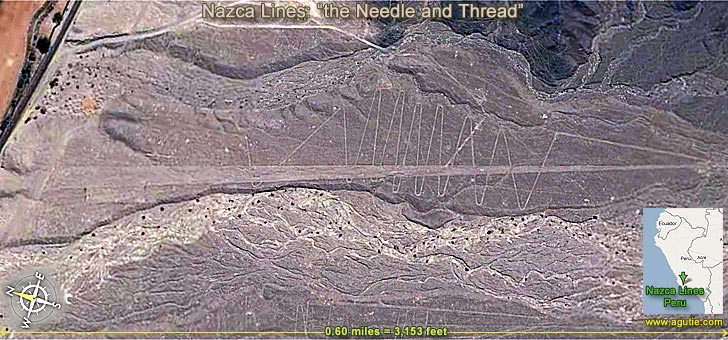Nazca Lines: The Needle and Thread
In the desert sand,
The Needle and Thread stand tall,
Nazca's art takes shape.

Nazca Lines: Google Earth Satellite image. Pointer 14º 50'
09.83" S, 74º 54' 10.27" W. |
|
The Nazca Lines "Needle and Thread" drawing begins at the left
of the figure as a wide beam; the beam is focused to a line as
it moves right the "needle"; the Nazca people then use an
oscillatory motion to delineate the borders of a plateau; and
ends up drawing a spiral, a common motif at ancient sites.
The Nazca or Nasca lines are groups of large line
drawings and figures that appear, from a distance, to be etched
into the earth's surface on the arid Pampa Colorada northwest of
the city of Nazca in southern Peru. Since their discovery in the
1920s, the lines have been variously interpreted, but their
significance remains largely shrouded in mystery.
The Nazca lines were constructed more than 2,000 years ago by
the people of the Nazca culture (c. 200 BC–AD 600).
Nazca culture: A pre-Incan civilization that flourished
on the southern coast of Peru from about 200 B.C. to about A.D.
600, known for its polychrome vessels decorated with stylized
designs and for the enormous drawings of geometric and
zoomorphic forms etched in the desert floor 200 miles south of
Lima.
Size comparison: The Empire State Building was built in
1931 and is 1,250 feet tall. By comparison the Nazca lines -
"Needle and Thread" (see above) is 2,800 feet long.
|